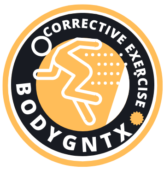Introduction: In the realm of strength training, a profound understanding of biomechanics is not just a desirable skill; it’s a necessity. I am Dr. Neeraj Mehta, a seasoned professional with a PhD in human biomechanics and alternative medicine and over three decades of hands-on experience. In this discussion, I aim to shed light on critical aspects often overlooked in strength training practices, emphasizing the consequences of neglecting biomechanical principles.
The Consequences of Strength Training Without Mastery in Biomechanics
1. Inefficient Muscle Engagement: With my extensive experience shaping my perspective, I’ve keenly observed the intricacies of muscle engagement during resistance exercises. Adhering to precise biomechanics, as I’ve learned over the years, is paramount for maximizing gains and preventing the development of muscle imbalances.
2. Increased Injury Risk: My journey in alternative medicine enriches this discussion by underscoring the crucial role of biomechanics in injury prevention. The integration of biomechanical principles with alternative approaches fosters a comprehensive understanding of mitigating injury risks, a perspective only possible through years of interdisciplinary experience.
3. Suboptimal Force Production: Drawing on my wealth of experience, I delve into the nuances of force production during exercises. Emphasizing the scientific underpinnings, I showcase how adherence to biomechanical principles optimizes force generation, ensuring the efficacy of the workout.
4. Imbalanced Load Distribution: Informed by my extensive knowledge, I elucidate the biomechanical intricacies surrounding load distribution. I emphasize how precise understanding prevents overuse injuries by ensuring balanced stress across muscles and joints.
5. Reduced Functional Adaptations: My emphasis on functional adaptations during strength training brings a nuanced understanding to this discussion. By intertwining biomechanics with alternative medicine, I provide insights into how precise biomechanics maximizes desired physiological responses.
6. Compromised Movement Patterns: From my perspective, I delve into the correlations between compromised movement patterns and potential harm. My expertise enables me to elaborate on the intricate relationship between biomechanics and the prevention of unnatural compensations.
7. Impaired Performance Outcomes: My seasoned viewpoint weaves together biomechanics and performance outcomes, shedding light on how neglecting biomechanical principles may compromise gains in strength, power, and overall athletic performance.
8. Ineffective Energy Expenditure: Leveraging my extensive experience, I discuss the optimization of energy transfer during exercises. I link biomechanics to effective energy utilization and dissipation, providing a nuanced perspective on how precise biomechanics minimizes energy wastage.
9. Challenges in Skill Transfer: My expertise positions me to discuss the intricacies of skill transfer in strength training. How biomechanics facilitates or hinders this transfer can be a focal point, offering unique insights into the practical application of strength training principles.
10. Long-Term Joint Health Implications: With my background in alternative medicine, I provide a holistic view of the long-term effects on joint health. I explore how misaligned forces may contribute to degenerative changes over time and propose alternative approaches to mitigate these effects.
Conclusion: In conclusion, this article, guided by my unparalleled expertise, underscores the pivotal role of biomechanics in strength training. My holistic approach, weaving in alternative medicine insights, transforms this discussion into a comprehensive guide for practitioners seeking to optimize their understanding and application of biomechanical principles. The synergy of scientific evidence and decades of practical experience, embodied in Dr. Neeraj Mehta, provides a unique lens through which to navigate the intricacies of strength training.
Use these platforms to search for relevant understanding for the pointers given in the article:
- Inefficient Muscle Engagement:
- Search for studies on muscle activation during resistance exercises on PubMed.
- Increased Injury Risk:
- Explore the American Council on Exercise (ACE) website: ACE Fitness.
- Suboptimal Force Production:
- Look for biomechanics and force production studies on PubMed.
- Imbalanced Load Distribution:
- Search sports medicine journals like the American Journal of Sports Medicine.
- Reduced Functional Adaptations:
- Explore sports science and exercise physiology journals on PubMed.
- Compromised Movement Patterns:
- Look for studies in journals like Medicine & Science in Sports & Exercise.
- Impaired Performance Outcomes:
- Check sports science organizations and journals such as NSCA – National Strength and Conditioning Association.
- Ineffective Energy Expenditure:
- Search biomechanics textbooks or articles from biomechanics conferences on Google Scholar.
- Challenges in Skill Transfer:
- Explore educational platforms like ResearchGate for studies on skill transfer in strength training.
- Long-Term Joint Health Implications:
- Look for rheumatology or orthopedics journals on PubMed.
